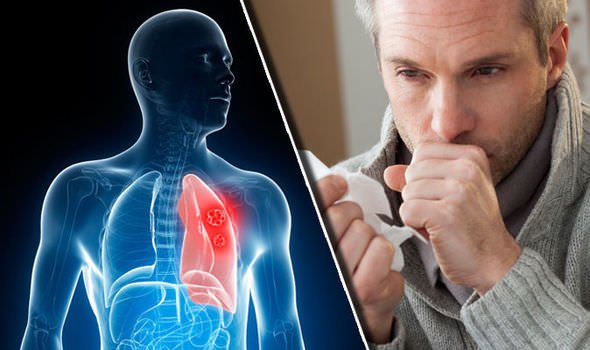AIR POLLUTION: Photochemical Smog and its Adverse Effects

AIR POLLUTION: Photochemical Smog and its Adverse Effects
What is Air Pollution and Smog?
Any substance added into the atmosphere that has adverse effects (at certain level of concentration) on living things and the environment is considered an air pollutant.
While smog is the pollutants given off by burning fossil fuels. Smog is formed from combustion or burning of fossil fuels like coal. It can occur both during the day and at night but photochemical smog only happens in the presence of sunlight. Photochemical smog is a widespread problem all over the world because of the increased industrial and vehicular emissions everyday.
What is Photochemical Smog and How is it formed?
Photochemical smog forms from a complex process, when nitrogen oxides and VOCs react with sunlight to form secondary pollutants, such as ozone and peroxyacetyl nitrate (PAN) creating a brown haze above cities.
Nitrogen oxides are emitted from vehicle exhausts and volatile organic compounds are generated by a multitude of chemicals, such as paint and cleaning agents.

The source of it is quite apparent - its largest contributor is vehicle and other automobiles while power plants that rely on coals produce the necessary pollutants to facilitate the production of photochemical smog.
Thermal/Temperature Inversion
Thermal inversion is a phenomena that occurs when a layer of warm air comes between two layers of cold air. The bottom layer of cold air is trapped by the warm air, and any pollutants or particulates in it don’t disperse as they normally would.
This is very uncommon because typically, the air closest to the earth’s surface is warmer than the air above it. The air being warmer closer to the ground is explained by the changes in atmospheric pressure higher up in the atmosphere.

Temperature inversions at higher altitudes lead to the formation of summer photochemical smog by trapping a humid layer of air below a layer of warm air, which holds up the pollutants. Since the warm air traps the pollutants in the cold air, the air close to the ground has much higher and more concentrated amount of pollutants that may pose health risks to living and non-living things.
Adrverse Effects
Photochemical smog has many adverse effects. When combined with hydrocarbons, the chemicals contained within it form molecules that cause eye irritation. Radicals in the air interfere with the nitrogen cycle by preventing the destruction of ground level ozone.
Health Risks
Photochemical smog is capable of inflicting irreversible damage on the lungs and heart. Even short-term exposure to photochemical smog tends to have ill effects on both the young and the elderly.

It causes painful irritation of the respiratory system, reduced lung function and difficulty breathing; this is more evident while exercising or working outdoors. Exposure or inhalation of smog can lead to several health problems due to its ozone content including coughing and throat or chest irritation, worsening of asthma symptoms and difficulty breathing.
Some of the toxins generated by chemical reactions in the photochemical smog are considered carcinogenic.
Environmental Impacts
The acidic nature of the smog can cause environmental damage.

Sulfur dioxide and nitrogen dioxide emissions react with water vapor in the atmosphere and form acids that is deposited to the surface of the Earth through precipitation such as rain, snow or sleet. Acid rain makes water acidic, and causes them to absorb the aluminum, when the acidic water percolates into the soil and mixes with the lakes and streams - this makes the waters toxic to crayfish, clams, fish, and other aquatic animals thus declining its population growth.
How can we prevent the formation of Photochemical Smog?
Many countries and organizations have prompted efforts to reduce emissions.
Switching over to other types of fuels, desulfurization of fuel gases from coal-fired power plants, expansion of public rail transport and low emission application of fertilizer in agriculture are some of the steps which have drastically reduced the level of photochemical smog.
Read my previous post: The Effects of Air Pollution to the Environment, Human Health, as well as other Land and Marine Life
THANK YOU FOR STOPPING BY!
Image sources: [1], [2], [3], [4], [5]
References:
https://study.com/academy/lesson/photochemical-smog-definition-formation-effects.html
https://sciencing.com/causes-photochemical-smog-6159455.html
http://energyeducation.ca/encyclopedia/Photochemical_smog
https://sciencing.com/effect-of-photochemical-smog-12328963.html
https://aaronaapes.wordpress.com/2016/02/15/a-thermal-inversion/
https://en.wikipedia.org/wiki/Air_pollution
A nice post..
Smoke factory is also included in the triggers of air pollution.
This factory smoke even donate huge carbon gas in the air. Factory fumes can also cause or become a trigger from the occurrence of acid rain.
Thank you. Im hoping everyone will be aware of this problem.
I feel ill living in Korea. There's gotta be a way to end this horror!!!!!!
If only we could switch to renewable energy. Those are clean and friendly instead of coal and fossil fuel combustion.
Good read. This helps us increase environmental awareness.
I hope so. But then, these issues are just being ignored by some especially by the big factories and other companies that profit from power plants who are using fossil fuels as source of energy.
Your advocate is very noble! It's rare to meet somebody with a good heart for the environment. I followed you.
Thank you. I hope we can all advocate in protecting our only home.
This is what Steemit is all about. Being able to voice out our opinion. You are right, we are killing our environment. POsts like this is one way of showing concern and give awareness.